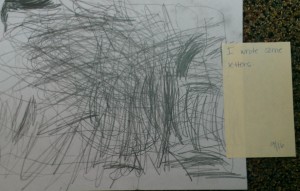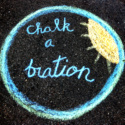MOVING TOWARD STUDENTS WHO ARE READY TO DRAW DETAILS
Are you a preschool or kindergarten teacher? Do you know preschool/kindergarten teachers who are searching for tips on creating writers in their classrooms? I have some answers for you or them as we remember that these students are writers too. Their stories are just much deeper in their little souls ready to emerge in a verbal form or drawing. Pull those stories out using the following tips and a form at the bottom for easy use in the classroom.
Bold items describe what the work looks/sounds like and the teaching points follow.
The Student’s Work Includes:
Very light pressure, resulting in barely visible lines, shapes and squiggles—or—A fist grab on the pencil and too much pressure resulting in tearing the paper or creating a “tornado” drawing. The verbal story may only include a two-three word phrase, likely labeling the most important element of the drawing—or—the student may have a well-developed verbal story. Both types of students likely lack the fine motor skills to draw/write the most important elements.  Always validate the student’s work by saying, “Tell me your story.”
Always validate the student’s work by saying, “Tell me your story.”
Listen and record the verbal story on a sticky note to place on the work.
To support this child’s need for fine motor control and development try one or more of the following:
- A golf pencil. This encourages the pincer grasp and is not heavy in the hand. The end of a long or thick pencil is often too heavy for these students.
- Encourage students to lie down on their belly all the way on the floor and prop up on their elbows. This position forces the child to engage the hand muscles instead of moving the entire arm. (Whole arm movement is also a good developmental step in motor development. This tip in particular happens to work smaller muscles).
- Using a three ring binder on the table or desk offers an incline and gives the arm a place to rest as well if the floor is not an option.
- Using tape or a magnet, place the student’s paper on a vertical surface. Give the student a felt tip marker first so the picture is visible. Then with a pencil or crayon, have the child trace over the drawing. This part can be done at a table or on the floor. The reason for tracing is to utilize the fine muscles in the hand as the felt tip drawing will likely include whole arm movement.
The Student’s Work Includes:
Shapes and unrecognizable figures. The verbal story is likely more detailed and includes important elements.
 Again, begin by saying, “Tell me your story.”
Again, begin by saying, “Tell me your story.”
Since the drawing is unrecognizable, do a drawing lesson, modeling one detail (chosen by the student when possible). A detail could be the house, pet or people in the verbal story.
Do all drawing lessons and drawing prompts on a sticky note so you can leave it with the student and the support is documented.
Encourage the use of color to support the picture.
The Student’s Work Includes:
A recognizable picture when given context through the verbal story.  It is likely that the picture is not easily recognized without context because there are too many details missing. Have the student repeat the verbal story and ask, “What have you included in your picture from your story?”
It is likely that the picture is not easily recognized without context because there are too many details missing. Have the student repeat the verbal story and ask, “What have you included in your picture from your story?”
Support the student by pointing out what is present and ask what is still needed to help push for a detail.
Offer a drawing lesson or suggest a finger drawing rehearsal.
- A finger drawing rehearsal is simple. The student rehearses what the picture will look like by imagining the details in the drawing. Using a pointer finger, the student “pretends” to outline details in the picture on a blank space of the paper. There will be no drawing visible yet, but the finger sweeping over the page allows the child to visualize what their pencil is about to do.
Again, always do drawing lesson prompts on a sticky note so you can leave it with the student and the support is documented.
Want this information in a printable document? Here is a link to the information above, but in a form you can use right on your clipboard as you watch students work.
Teacher Prompt and Support Continuum—Talking to Drawing
Two Little Extras for the day:
Today is Chalk-A-Bration over at Teaching Young Writers, one of my blogs. I hope you will consider joining in this once a month celebration. To get ideas or just peek in on other celebrators check in today at Teaching Young Writers.
I know many of you will be out with your trick-o-treaters this evening. Have a safe and Happy Halloween!





This post is so helpful! I live that you started from the earliest stage–too often we discount those important scribbles and marks. Thanks!
LikeLike
Thanks for these tips, Betsy. I am a former classroom teacher, and am now homeschooling my six-year-old son. I can use some of these ideas with his four-year-old brother.
LikeLike
Thank you Betsy! As a special education teacher in a first grade inclusion class, this information is very helpful!
LikeLike
This is fantastic information, Betsy. As a parent of a budding literate human, I appreciate your insights. My experience is mostly with kids in grades 3-5 so getting the scoop on what primary writing looks like in its different stages is SO helpful.
LikeLike
This is so great, Betsy! Thanks for the tips – will share with my kindergarten teachers!
LikeLike
I love this information Betsy! There is such a range of abilities for students in kindergarten. This is helpful for each stage of writing development.
LikeLike
Betsy, this is great information! I will be sharing this with my kindergarten teachers. Many are frustrated that their kids seem to be scribbling and not drawing. Now we have some ideas to stretch the kids a bit more.
LikeLike